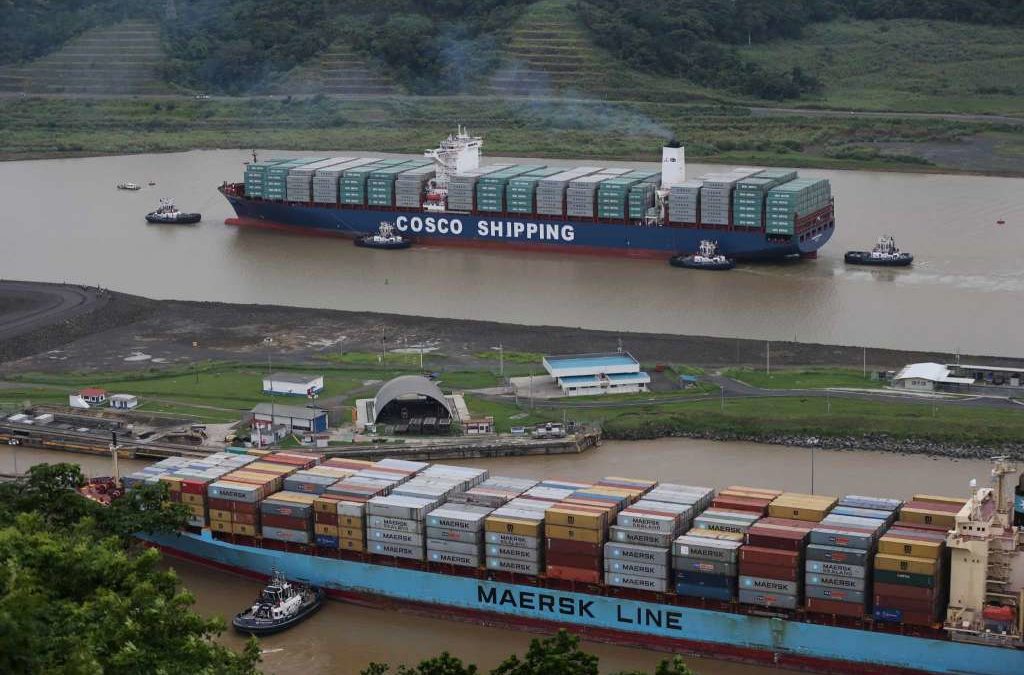High expectations can make something that is perfectly adequate feel like a failure.
Films based on books are an example. A decently made movie can entertain someone who hasn’t read the book but disappoint those who did. In business, midlevel managers know to always under-promise and over-deliver, lest the boss’s expectations rise too high.
That life lesson apparently escaped the boosters of the newly expanded Panama Canal. Normally, Houstonians wouldn’t care much, except that local and state governments, nearby ports and regional businesses are all considering spending billions of dollars to take advantage of the purported opportunities delivered by more ships with more tonnage coming to the Gulf Coast.
The Houston Chronicle reports, expanding the canal made perfect sense when 70 percent of Panamanian voters approved the project in 2008. Americans were buying millions of containers full of Chinese products, and to keep delivery costs low, shipping lines commissioned huge vessels that were too long, too wide and sat too low in the water to fit through into the canal’s 1914-era locks.
The Panama Canal Authority was losing business to U.S. railroads that took Asian goods from these massive ships on the West Coast ports and delivered them nationwide. The bigger ships could also use Egypt’s Suez Canal to reach East Coast ports. Panama needed longer and deeper locks to compete.
As the most active port in the Gulf of Mexico, Houston is the natural beneficiary of bigger ships passing through Panama. The port not only stands to receive more goods from Asia, but could also load more American-made goods for export.
Tom Daley, a principal in the consumer and industrial division of consulting firm Deloitte, sees opportunity for advanced manufacturing companies to receive parts in Houston and then export high-end products.
“Exports are far more valuable than imports,” Daley said. “The United States will be number one in advanced manufacturing by 2020, overtaking China. … If you take these two opportunities together, with some leadership and the right policies, you could create an advanced manufacturing environment in the Houston area.”
How much we should invest is an important question. For decades the Port of Houston has mirrored the Panama Canal’s capacity, with a 40-foot-deep channel and cranes that stretched the width of so-called Panamax ships, which are 106 feet wide and 965 feet long. The new locks are supposed to accommodate 12 “New Panamax” ships a day that can carry 150 percent more cargo, are 1,200 feet long, 160 feet wide and have a 50-foot draft.

The new super post-Panamax cranes operates at the Houston port on Friday, Nov. 6, 2015, in LaPorte. The larger renovation to the terminal is to handle increases in container trade with larger ships coming through the Panama Canal. ( Elizabeth Conley / Houston Chronicle )
Texas ports have spent millions to attract the larger ships. The Port of Houston has spent millions on larger cranes, longer docks and $85 million to dredge the channel down to 45 feet.
Port Freeport plans to dredge its 45-foot channel down to 50 or 55 feet in hopes of adding what one consultant promised could be 10,000 new jobs.
“Time is of the essence,” Fort Bend County Commissioner Andy Meyers told business and elected officials in May. “We need to move quickly to get decisions made.”
All of this excitement assumes, though, that the Panama Canal Authority will deliver, and so far, it hasn’t. The New York Times released an in-depth investigation in June that revealed that even after going $1.6 billion over budget and opening two years late, the new locks are shoddily built, the waterways are treacherous, and the project is unlikely to ever operate at the promised capacity.
Construction companies skimped on concrete, and the decision to use tugboats to maneuver ships through the locks, rather than the land-based railroad engines used in the original, makes collisions more likely. Last month a Chinese cargo ship struck a wall, cutting a gash in the hull. Experts say it is too risky to rush 12 ships a day through the locks.
The global economy is also shifting, with China reducing its reliance on exports and U.S. manufacturing ticking upward. With shipping rates and fuel prices dropping, companies are using fewer of the big ships and choosing longer routes that don’t involve expensive canal fees.
The more fundamental problem for the new canal, though, is a lack of water. The canal relies on rain that falls on the surrounding hills, and some scientists question if there will be enough water to float ships with 50-foot drafts when fully loaded. Today, the canal is only accepting ships with less than 41-foot drafts due to a lack of water.
Port and government officials along the Gulf Coast need to think twice about investing millions of dollars in dredging deeper channels or adding more cranes and dock space. They should take a lesson from the now-defunct Bayport Cruise Terminal, which wasted $130 million of taxpayer money with a “build it and they will come” attitude.
Executives and politicians considering investments based on the expanded canal should take pause and wait for it to establish a routine. There will be more ships coming to Houston, but we simply don’t know enough to build a sound business plan on how to capitalize on the opportunity.
By Chris Tomlinson Business Columnist




